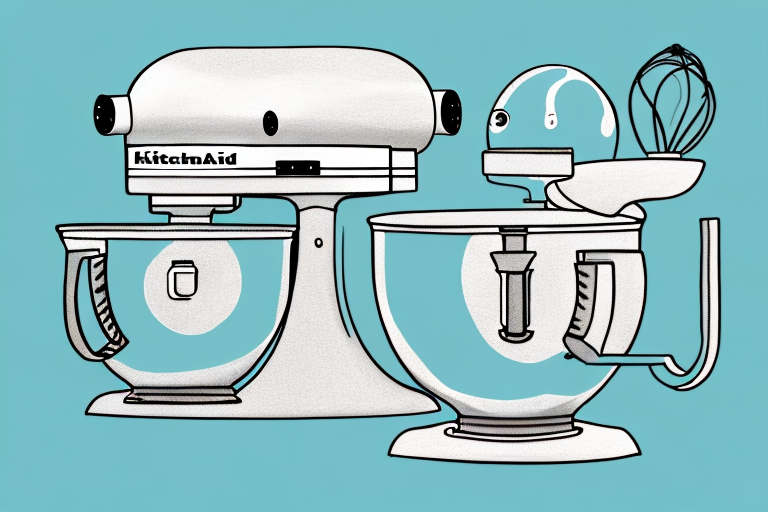KitchenAid attachments are an invaluable addition to any kitchen. Not only do they open up a whole range of culinary possibilities, they are also incredibly long-lasting and resilient. While these attachments are capable of surviving years of tough use, there’s one important factor you should consider when it comes to your KitchenAid attachments: dishwasher safety.
Benefits of Dishwasher Safe KitchenAid Attachments
The primary benefit of a dishwasher-safe KitchenAid attachment is convenience. By throwing them into the dishwasher, you can save a considerable amount of time spent scrubbing each attachment. This can make a huge difference if you’re trying to get dinner on the table quickly.
Furthermore, being able to place your KitchenAid attachments in a dishwasher also means that you can keep them as clean as possible. Getting all the nooks and crannies in handheld attachments can be difficult, and sometimes you get residue left behind in hard-to-reach areas. Placing these attachments in the dishwasher will ensure that these hidden spots get completely sanitized.
How to Clean KitchenAid Attachments
If you don’t have a dishwasher – or you’re unsure if your KitchenAid attachments are dishwasher safe – it’s best to play it safe and wash them manually. Start by removing any stuck-on food particles using a soft sponge and warm, soapy water. Once all the visible food has been cleaned away, put some baking soda onto a soft cloth and run it over the attachment – this will help remove any smells lingering from the food.
Once you’ve cleaned the entire attachment, rinse it off with cold water and dry it immediately. If your attachment is especially oily or greasy, you can give it an extra rinse with a mixture of white vinegar and warm water to make sure all the gunk has been washed away.
Factors to Consider When Choosing Dishwasher Safe Attachments
When choosing KitchenAid attachments, the most important thing to keep in mind is that not all attachments are dishwasher safe. Before deciding on what attachment to buy, always check the manufacturer’s instructions to ensure that it is indeed dishwasher safe. If you are unsure, err on the side of caution and assume that the attachment is not safe for the dishwasher.
It is also essential to be aware of any fragile parts that may not be able to withstand the heat and agitation of a dishwasher cycle. Some parts may become warped or damaged if placed in a dishwasher, so be sure to look out for these before placing your attachment in the dishwasher.
Maintenance Tips for Keeping KitchenAid Attachments Clean
One of the best ways to prevent your KitchenAid attachments from becoming dirty is to avoid allowing them to build up a layer of grease or dirt. Clean them after every use, either by hand or in a dishwasher depending on the manufacturer’s instructions.
Always use warm-to-hot water when cleaning your KitchenAid attachments as this will help break down any grime or stuck-on food particles. You can also avoid grime buildup by avoiding putting sugary foods or acidic items such as lemon juice onto the attachments.
Troubleshooting Common Issues With KitchenAid Attachments
Often times KitchenAid attachments may become stuck or jammed during use. If this happens, first shut off the power and unplug your mixer, then carefully remove the attachment. Remove any visible gunk or residue if needed – sometimes this can be enough to allow the attachment to function normally again.
If residue is not the culprit, inspect the hinge and moving parts of the attachment for any wear and tear or damage. Sometimes these components may require replacement if they have become too worn or damaged to function properly. If a replacement part is necessary, contact KitchenAid customer service for assistance.
Tips for Storing KitchenAid Attachments
Storing your KitchenAid attachments correctly can help them last longer and maintain their quality for further use. Start by wiping them down after each use and drying them off with a clean cloth. This will help remove any moisture that could cause rust on any metal parts.
After cleaning your attachments, store them in a cool, dry place. The best option is either on a shelf or in a drawer where they won’t be exposed to excessive heat or humidity. If possible, store them separately so that they don’t rub against one another.
What to Look for When Shopping for Dishwasher Safe KitchenAid Attachments
When shopping for dishwasher safe KitchenAid attachments, be sure to look for ones that have either “dishwasher safe” or “dishwasher-safe” printed on the label. If there is no label, contact KitchenAid customer service and they should be able to provide further information regarding the attachment’s dishwasher safety.
Additionally, when selecting dishwasher safe KitchenAid attachments, consider the type of material they are made of. Most KitchenAid attachments are made from stainless steel which can easily withstand harsher dishwashing cycles without becoming damaged, but some kitchen gadgets may contain other materials that can be damaged by heat or agitation.
By taking all these steps into account, you can ensure that you can safely and effectively clean your KitchenAid attachments without having to worry about damaging them in the process.













